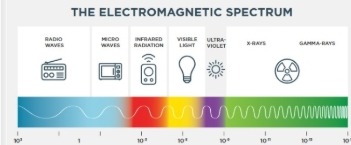
Protect Your Devices from EMI and RFI
Future-Proof Your Designs with Advanced Shielding Solutions
Electromagnetic Interference (EMI) and Radio Frequency Interference (RFI) are growing concerns in today’s world of high-speed, interconnected devices. Whether you’re developing products for the Internet of Things (IoT), 5G networks, or electrified vehicles, EMI shielding is essential to ensuring reliable performance, reducing noise, and preventing costly failures. Learn how to protect your designs and meet the challenges of modern engineering with cutting-edge EMI shielding technologies.
Key Insights and Design Considerations
As technology evolves, the frequency and intensity of electromagnetic signals are increasing, making EMI shielding more critical than ever. This is particularly true in industries experiencing rapid growth and innovation, including IoT, 5G, and electrification. Discover the factors that engineers must consider for effective EMI protection in your designs:
- 5G and IoT: Higher frequencies, increased connectivity, and faster data speeds drive the need for stronger shielding solutions.
- Electrification: Electric vehicles (EVs) and their associated systems—batteries, converters, and charging stations—pose significant EMI challenges that must be addressed.
- Signal Integrity and EMC: Achieving proper signal integrity is crucial for maintaining device functionality, while electromagnetic compatibility (EMC) ensures devices can coexist without interference.
Challenges of EMI Shielding in Modern Design
1. IoT and 5G Networks
The rise of connected devices and the rollout of 5G technologies require next-level EMI shielding to prevent interference between increasingly powerful and fast signals.
- Higher frequency bands (2.5 GHz to 86 GHz) require new shielding materials and techniques.
- Increased base station densities and higher data rates mean higher noise levels and heat emissions, demanding robust solutions.
2. Electrification of Vehicles
Electric and hybrid vehicles are complex systems with multiple electrical components, creating potential sources of EMI.
- Shielding for batteries, converters, and electric charging stations is critical to ensure safety and system integrity.
- External sources of EMI, such as household electronics and environmental factors like solar storms, must also be mitigated.
3. Signal Integrity and Electromagnetic Compatibility
For reliable communication and performance, devices must maintain signal integrity while also meeting EMC standards to avoid interference with other systems.
- Use of simulation tools in early design stages can ensure high-quality signal transmission and compatibility between electronic devices.
Advanced EMI Shielding Solutions
Stay ahead of the curve with high-performance materials and technologies for EMI shielding:
- Conductive Materials: Copper, aluminum, and silver-plated materials for effective signal blocking.
- Metallized Films: Lightweight, cost-effective solutions for flexible and thin applications.
- Nanomaterials: Cutting-edge carbon-based and nanostructured materials for advanced EMI performance.
- Custom Shielding Designs: Tailored solutions to meet the specific needs of your industry, whether it’s for IoT, 5G, or electric vehicles.

This article is posted at te.com

Please fill out the form to access the content






